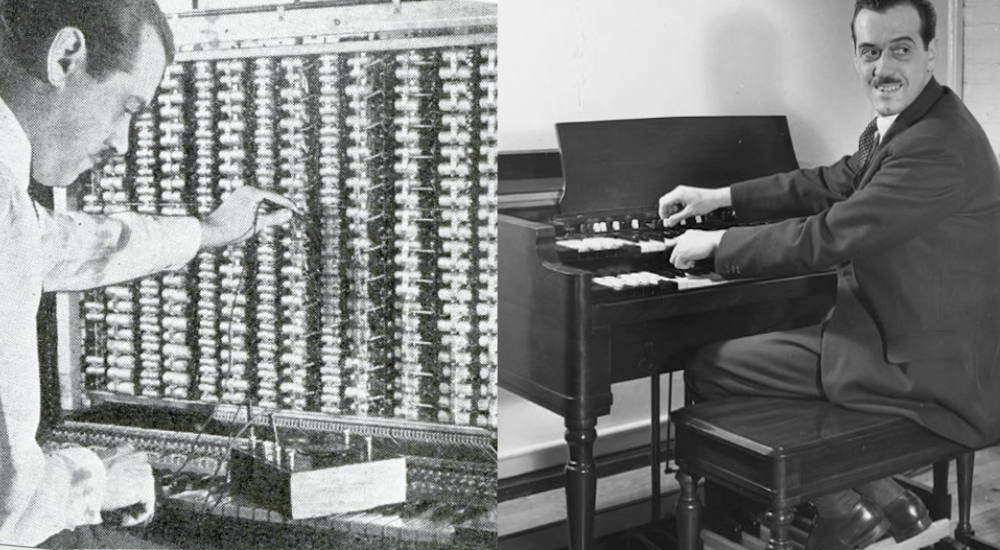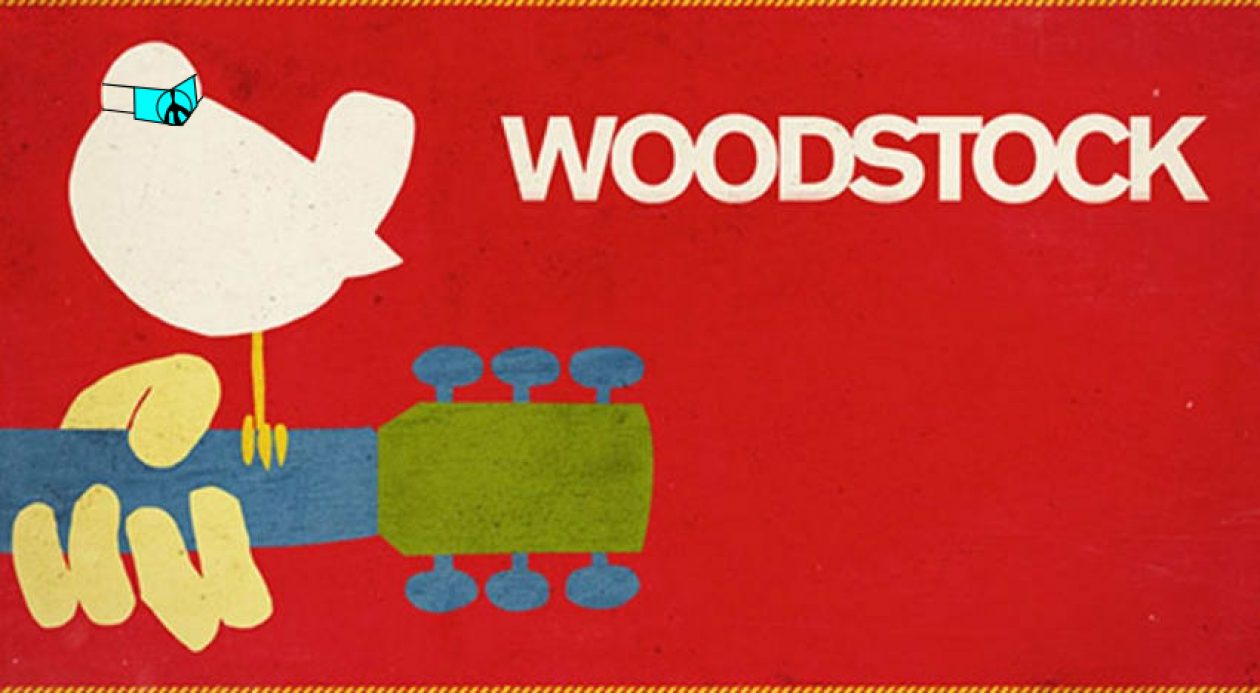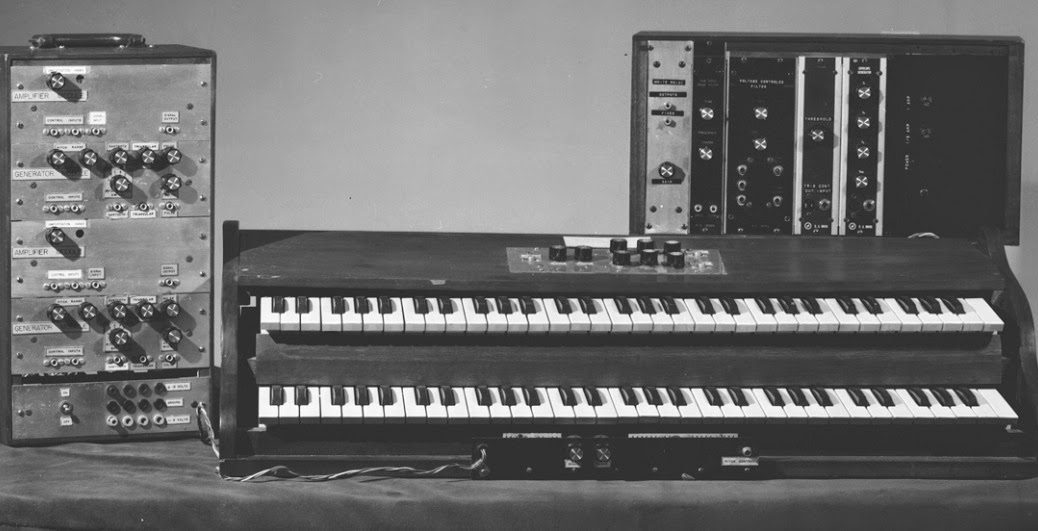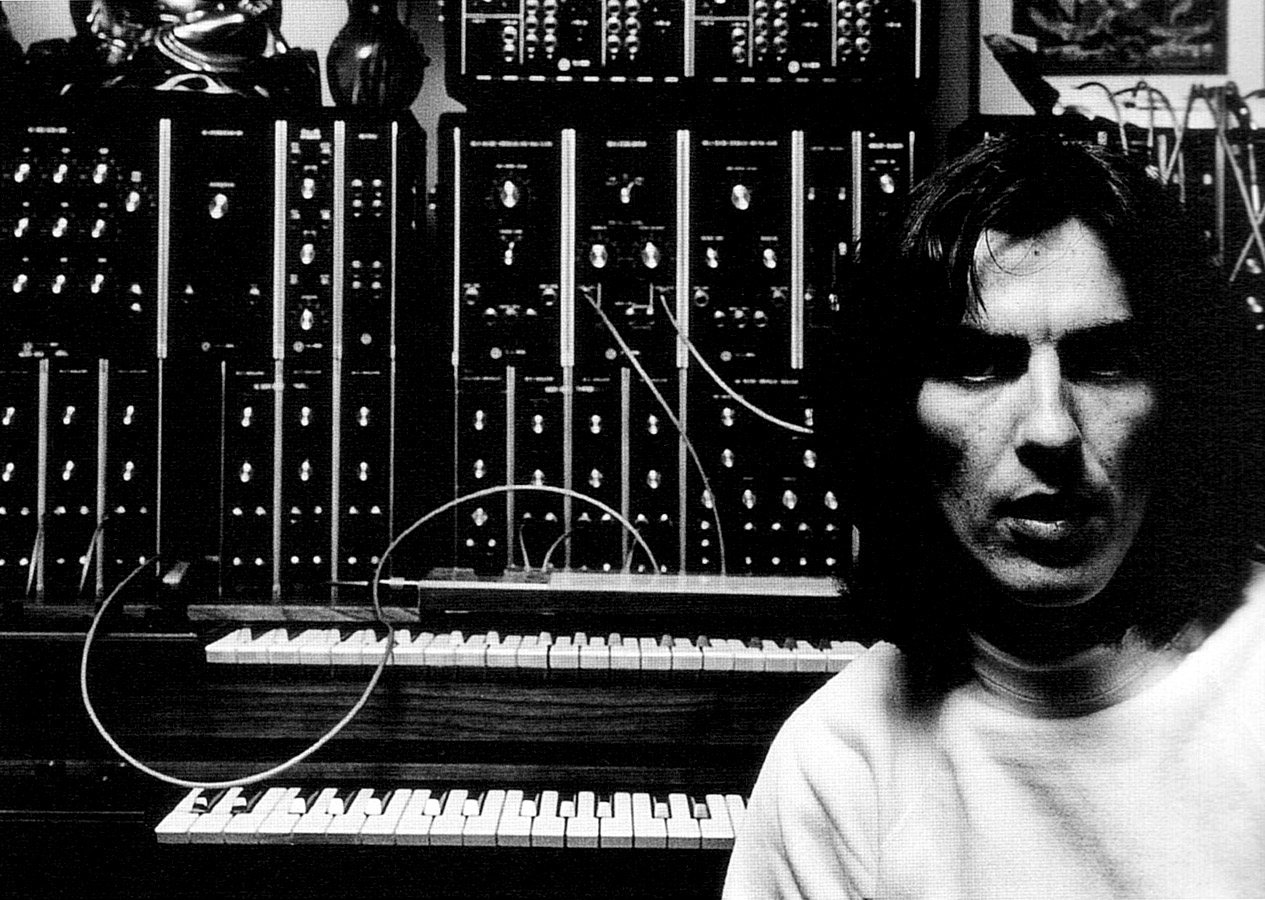Robert Moog Herbert Deutsch
Introduced their synthesizer on October 12, 1964.
Herbert Deutsch speaking about its development:
“The Minotaur” from Moog: The Electric Eclectics of Dick Hyman
Robert Moog Herbert Deutsch
Sound effects

Born in 1950, I just missed the excitement of radio shows and how their sound effects made the stories “real.” Early TV shows and movies occasionally showed those radio station sets and revealed how clever sound technicians recreated the real world with “fake” noise. Need the sound of a door closing? Close a door. Need the sound of thunder? Move a large, thin sheet of copper suspended from a frame by wires.
Robert Moog Herbert Deutsch
Electronic Music
The mixture of electricity and sound effects created new possibilities. Around 1896, Thaddeus Cahill developed the Telharmonium. Much like later electric organs, it used wire to transmit sound to horn speakers.
Leon Theremin developed a much simpler instrument. Below you can watch him demonstrate it. He used it much like a violin. Unfortunately for him, I suppose, most Boomers hear a Theremin (aka, the aetherphone) and think of space invasion movies.
Robert Moog Herbert Deutsch
Laurens Hammond

Laurens Hammond established his company in 1929 for the manufacture of electronic instruments. His Hammond organ used the same principals that the Telharmonium had used.
As electronics got more sophisticated, so did technicians’ ability to create more sophisticated instruments.
“Moeg“
In 1963 Robert Moog (pronounced “Moeg” like Moe of the Three Stooges not “Moooog” like Daisy the Cow) and Herbert Deutsch met. Deutsch was a musician; Moog a technician. Together they came up with the idea of making a user-friendly electronic keyboard that had a huge range of sound. Much wider than even a Hammond organ.
And on October 12, 1964, Moog and Deutsch introduced and demonstrated their music synthesizer at the convention of the Audio Engineering Society in NYC.
Beatles and Moog
While the instrument and its later refinements did not catch on immediately, it gradually became a huge part of rock music. The Beatles (of course) via George Harrison (of course) used a Moog on their last recordings together:
- the wind at the end of “I Want You (She’s So Heavy)”? Moog.
- that lovely counterpoint to the acoustic guitar that gently slides in at the beginning of “Here Comes the Sun” ? Moog.
- “Because” uses the Moog as well.
Reaction
What was the reaction to the Moog? Ed Ward of Rolling Stone magazine reviewed Abbey Road and though that the Moog “disembodies and artificializes” the band’s sound. He added that they “create a sound that could not possibly exist outside the studio.”
Since the Beatles weren’t touring or performing live, that wasn’t a problem. Having said that, if anyone has ever experienced the Fab Faux in concert and their eerie ability to play Beatles music of any era, then Ward’s comment is untrue.
What do you think?
Robert Moog Herbert Deutsch
EDM
:format(jpeg):mode_rgb():quality(90)/discogs-images/R-113235-1296923435.jpeg.jpg)
In any case, it was was nice that Mr Moog and Mr Deutsche met and gave us a whole world of sound to add to our library.
A reader of this blog added an interesting comment: …and don’t forget Dick Hyman’s album of Moog music, which included the song, The Minitaur, which found its way into the Emerson, Lake, and Palmer playlist.
That album is: Moog – The Electric Eclectics Of Dick Hyman
Herbert Deutsch is a Professor Emeritus of Music at Hofstra University and is a visiting professor at the Gallatin School of Individualized Study at New York University.
Bob Moog died in 2005, but his legacy lives on.


